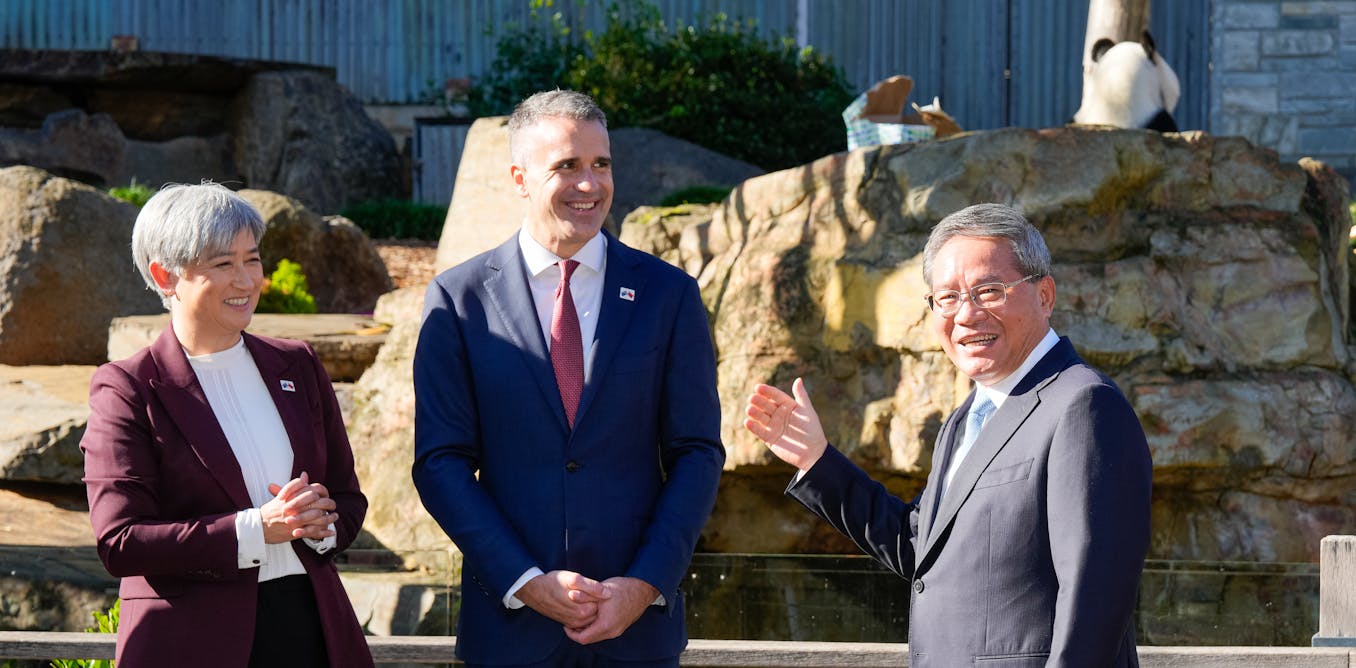Major Policy Differences: Albanese And Dutton's Contrasting Visions

Table of Contents
Australia's political landscape is sharply divided, with Prime Minister Anthony Albanese and Opposition Leader Peter Dutton offering starkly contrasting visions for the nation's future. This article explores the major policy differences between Albanese and Dutton, examining their approaches to key areas impacting Australian citizens. Understanding these differences is crucial for informed voting and participation in the democratic process. The choice between these leaders represents a fundamental choice about the direction of Australia, making understanding the nuances of Albanese vs Dutton policies paramount for every voter.
Economic Policy: Stimulus vs. Fiscal Responsibility
Albanese's Approach: The Albanese government prioritizes targeted economic stimulus to boost growth and create jobs. This involves significant investment in infrastructure projects, aiming to stimulate economic activity and create employment opportunities across various sectors. Key aspects of this approach include:
- Emphasis on job creation: Government spending is strategically directed towards projects that generate numerous jobs, from construction and engineering to supporting industries.
- Investment in skills and training: Significant funding is allocated to upskilling and reskilling programs to equip the workforce for the future economy, particularly in emerging sectors like renewable energy.
- Support for SMEs: Small and medium-sized enterprises are recognized as the backbone of the Australian economy, receiving support through grants, tax incentives, and access to finance.
- Renewable energy transition: Investment in renewable energy infrastructure is seen not only as crucial for environmental sustainability but also as a significant driver of economic growth and job creation. This includes substantial investment in solar, wind, and other renewable energy sources, creating opportunities in manufacturing, installation, and maintenance.
Dutton's Approach: In contrast, Dutton and the Coalition emphasize fiscal responsibility and reduced government spending. Their economic policy focuses on:
- Reducing the national debt: A central tenet is to reduce government spending to lower the national debt, arguing this fosters a stronger economy in the long term.
- Tax cuts for businesses and individuals: Tax cuts are proposed as a means to stimulate private sector investment and encourage consumer spending. Lowering taxes is seen as encouraging business growth and individual wealth creation.
- Reduced government regulation: Dutton advocates for deregulation, believing it fosters competition and economic efficiency. Less government intervention is deemed crucial for economic dynamism.
- Potential for slower short-term growth: While aiming for long-term fiscal stability, this approach might lead to slower economic growth in the short term compared to Albanese's stimulus-focused strategy.
Climate Change: Action vs. Pragmatism
Albanese's Approach: Albanese's government has adopted ambitious targets for emissions reduction, committing to significant action on climate change. This commitment is reflected in:
- Increased investment in renewable energy technologies: Substantial funding is directed towards research, development, and deployment of renewable energy technologies.
- Phasing out coal-fired power plants: A gradual transition away from coal-fired power is underway, with a focus on replacing them with cleaner, renewable energy sources.
- Participation in global climate initiatives: Australia is actively engaging in international collaborations to address climate change, rejoining agreements and committing to global targets.
Dutton's Approach: Dutton and the Coalition adopt a more pragmatic approach, prioritizing energy security and affordability. Their concerns include:
- Focus on reliable and affordable energy sources: While acknowledging the need for emissions reductions, the emphasis is on ensuring reliable and affordable energy supplies for Australian households and businesses.
- Concerns about the economic impact of rapid decarbonization: Concerns are raised about the potential economic costs of rapid decarbonization, advocating for a more gradual transition.
- Less emphasis on international climate agreements: The Coalition's approach shows less emphasis on participation in international climate agreements and focuses on national interests.
Healthcare: Universal Access vs. Private Sector Focus
Albanese's Approach: The Albanese government emphasizes strengthening Medicare, the nation's universal healthcare system, to improve access and affordability. Their key strategies include:
- Investing in public hospitals and healthcare infrastructure: Significant investment is directed toward improving facilities and resources within the public healthcare system.
- Addressing the shortage of healthcare professionals: Efforts are focused on attracting and retaining healthcare professionals to address existing shortages and ensure better patient care.
- Focusing on preventative healthcare: Emphasis is placed on preventative measures to reduce long-term healthcare costs and improve public health outcomes.
Dutton's Approach: Dutton and the Coalition tend to emphasize the role of the private sector in healthcare, potentially leading to changes in the balance between public and private healthcare services:
- Focus on efficiency improvements: Improving efficiency and reducing waste within the healthcare system is a priority, potentially through streamlining processes and administrative reforms.
- Potential for increased user fees and out-of-pocket expenses: Increased reliance on the private sector might lead to higher user fees and out-of-pocket expenses for patients.
- Greater emphasis on competition within the healthcare market: Introducing more competition within the healthcare market is seen as a means to improve efficiency and drive down costs.
Social Policy: Inclusivity vs. Traditional Values
Albanese's Approach: Albanese's government champions social inclusion and equity, focusing on supporting vulnerable populations and promoting diversity. This includes:
- Support for LGBTQ+ rights and Indigenous Australians: Active support for LGBTQ+ rights and addressing the historical injustices faced by Indigenous Australians are key aspects of their social policy.
- Focus on social justice and equity: Reducing inequality and improving opportunities for marginalized groups are central to their approach.
Dutton's Approach: Dutton and the Coalition tend to adopt a more traditional approach, emphasizing personal responsibility and national identity. This approach may include:
- Potential for stricter immigration policies: There might be a focus on stricter border control and immigration policies, emphasizing national security.
- Emphasis on national security and border protection: Strengthening national security and border protection are key priorities.
- Different approaches to welfare and social safety nets: The Coalition may propose different approaches to welfare and social safety nets compared to Albanese's government.
Conclusion
The policy differences between Anthony Albanese and Peter Dutton are substantial and impact many facets of Australian life. Understanding their contrasting approaches to economic management, climate change, healthcare, and social policy is vital for informed voting. The choice between these leaders represents a significant decision about Australia's future. To further inform your decision, research the detailed policy platforms of both Albanese and Dutton. A thorough understanding of Albanese vs Dutton policies is essential for active participation in Australian democracy.

Featured Posts
-
 Andor Season 1 Where To Watch Before Season 2
May 15, 2025
Andor Season 1 Where To Watch Before Season 2
May 15, 2025 -
 Lietuviai Neisigijo Boston Celtics Rekordinis Klubo Pardavimas
May 15, 2025
Lietuviai Neisigijo Boston Celtics Rekordinis Klubo Pardavimas
May 15, 2025 -
 Andor Season 2 A Recap Before The Premiere
May 15, 2025
Andor Season 2 A Recap Before The Premiere
May 15, 2025 -
 La Liga And Fan Code Forge Strategic Multi Year Partnership
May 15, 2025
La Liga And Fan Code Forge Strategic Multi Year Partnership
May 15, 2025 -
 The Future Of Reproductive Healthcare The Role Of Over The Counter Birth Control Post Roe
May 15, 2025
The Future Of Reproductive Healthcare The Role Of Over The Counter Birth Control Post Roe
May 15, 2025
